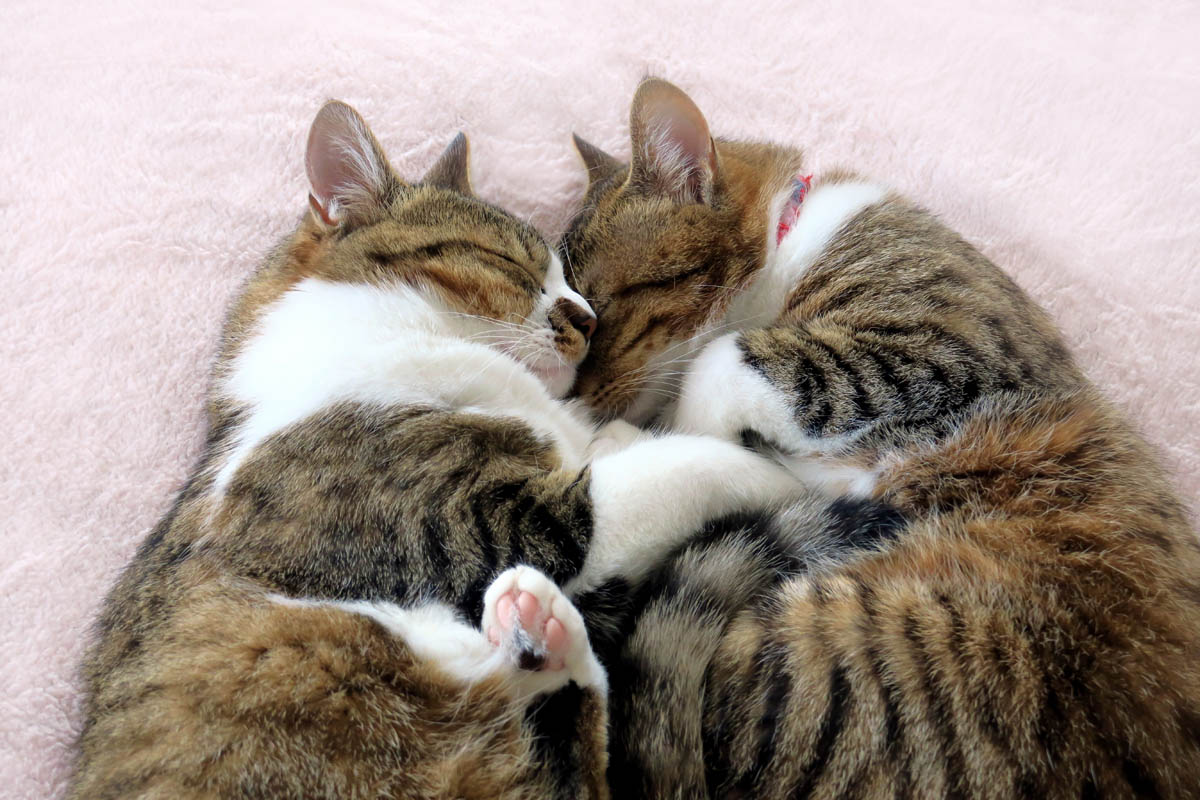About
Cats aren’t always the easiest animals to read and can’t tell us what they are thinking, but they do provide us with many clues as to how they feel in general, about us and towards other cats in the house.
Nothing is sweeter than two cats who get along and are company for one another when their humans are out of the house. It is common for cats to bond who were brought together as kittens, or when a kitten is introduced to an adult, but even two adult cats can form close relationships with each other.
What are the signs that two cats like each other?
Rubbing against each other

Cats who are on friendly terms will often rub their heads and bodies together. Cats have scent glands on their cheeks, lips, temples, flanks and tail which secrete pheromones. When cats rub against each other, they transfer their scent onto the other cat.
Mutual grooming

Cats experience grooming from another cat the moment they are born when the kitten’s mother licks the newborn. The mother will continue to groom the kitten until he or she is old enough to groom himself.
The scientific word for mutual grooming is allogrooming and cats will participate in mutual grooming as adults. Mutual grooming is most common among related cats, but can also occur between unrelated cats too. Allogrooming occurs most often on the head, and the neck and can be a form of social bonding or a way to transfer scents between cats.
Sleeping together

Cats who get along well will sleep together, often intertwined.
Playing together

Friendly cats play together, which can include play fighting, chasing a ping pong ball or toy and playing zoomies (chasing each other around the house).
Play fighting can be differentiated from a serious fight if the cat’s claws remain sheathed, the ears remain in a normal position, there is no hissing or growling, and the bite is inhibited so that it doesn’t hurt the other cat.
Separation anxiety
Some cats can form such close attachments that if one goes away (outside, to the vet or passes away); the other cat will look for and cry for the missing cat. This can be quite distressing for both the cat as well as the cat’s carers.
What if cat housemates don’t do these things?
All of the above signs are a good indicator that your cats are getting along; however, not all friendly cats will participate in the above; each relationship is different. Some may engage in one or two behaviours or none at all.
My cats who get along are fighting after being separated?
Sometimes when cats are separated, usually because one has been to the veterinarian, the returning cat will be hissed at and in some cases attacked by his or her companion. This phenomenon is known as non-recognition aggression. The cat who has been away and returns home smelling or looking different which the resident cat doesn’t recognise. This kind and level of aggression can take on many forms including hissing, growling and swiping to a full-blown attack on the returning cat.
It can help to bring along a piece of bedding (such as a blanket used to line a cat bed, which has the scent of the resident cat and/the house) when picking up the cat. Place this in the cat carrier for the cat to sit on. It will help to transfer familiar household scents onto the returning cat.
Harmony is usually restored within a day or so.

